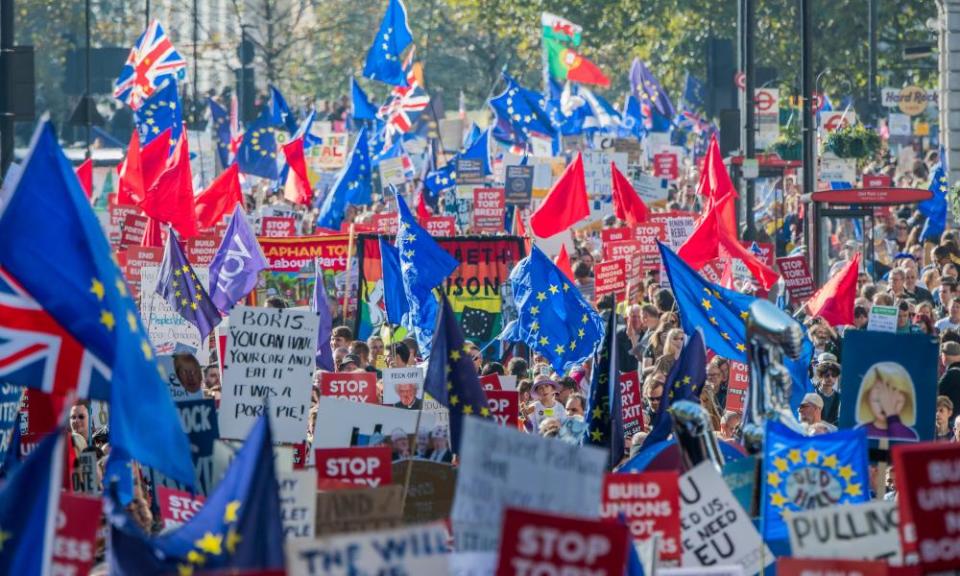The Guardian view on the march for a people’s vote: a step forward

If participation in a march counted as membership of a political party, the party opposed to Brexit is now probably the largest in Britain, and on some counts larger than the Labour and Conservative parties combined. 700,000 people demonstrated for a referendum on the final terms of any Brexit deal; the Conservatives claim 125,000 and Labour 540,000 ordinary members.
Both main parties are, to different degrees, divided over the question. The idea that a small group of self-regarding and self-deluding fanatics inside the Conservative party and the DUP should be able to dictate the most damaging possible form of Brexit is an affront to common sense. There is a real concern that a parliamentary majority is cowed by a hardline interpretation of the 2016 referendum result. Those MPs need the reassurance that hundreds of thousands of politically engaged fellow citizens now see Brexit for the self-inflicted wound it looks to be. That is what Saturday’s march supplied.
Many in parliament and the country at large accepted the first referendum result in good faith. They sincerely wished that the leadership of this country could find a non-destructive route out of the EU. No one in that camp yearns for another referendum. But some would argue that the political cost of confronting a Brexit reversal is lower than that of driving into an abyss. Inaction looks attractive while no one knows what terms, if any, will be agreed on which Britain is to leave the EU. No one yet knows what terms any party really wants and what price it is prepared to pay to achieve them.
Discussion of all these questions is still mired in make-believe. Realism still has some way to go. The increasing violence of language that Tory Brexiters are using against their own party suggests their desperation: talk of a “firing squad”, “a noose” and so forth for Theresa May, coming from some of her own MPs, suggest they still believe that if she were gone some other leader could work the magic they require and spin the gold of freedom from the dung-crusted straw of real trade agreements. None could, of course.
Much of the opposition to her now is led by men who as ministers signed up to the agreements which they now revile. They must know now that no government can deliver a Brexit which makes this country stronger and safer than EU membership does, but their hope of power lies in denying this.
There is a danger of magical thinking on the people’s vote side as well. The march was an inspiring statement of intent but it was not a programme of action. A second referendum could not on its own solve any of the problems which led to the vote to leave. It might exacerbate the divisions of the United Kingdom even more than the first referendum did. The stubborn, patient goodwill that the demonstrators showed as they waited – and they were so numerous that they spent far more time waiting than marching – needs to be harnessed towards solving the problems that led to the referendum result.
The Brexit vote was, as one banner said, the wrong answer to the wrong question. Those who reject that answer – and we are surely by now a majority, which will grow steadily as the date of departure approaches – must not be satisfied with getting the answer right this time. The question is still wrong. If the country is not to be consumed by it for decades, we need to discover what are the real questions – inequality and injustice, poverty of hope and of accomplishment– and face them with the courage and honesty which animated Saturday’s marchers.

 Yahoo News
Yahoo News 